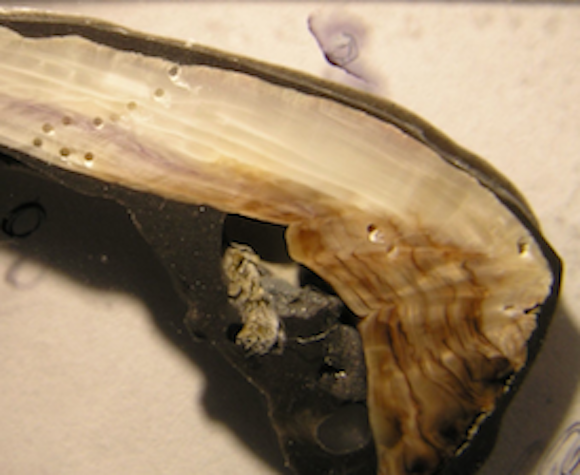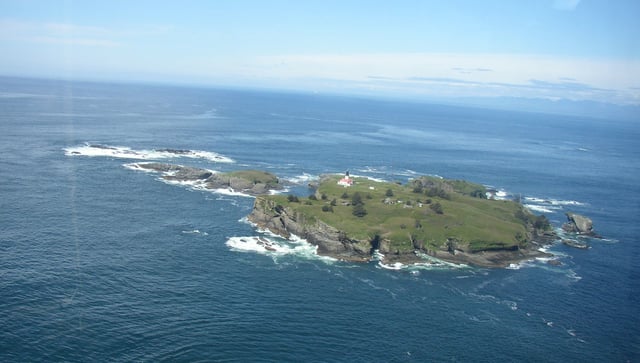Modern mussel shells much thinner than 50 years ago

As humans burn fossils fuels, the oceans absorb a large portion of the additional carbon released into the atmosphere. This in turn causes pH levels of ocean water to drop, making it more acidic. Mussels, oysters, and certain species of algae have difficulty producing their calcium carbonate shells and skeletons in such an environment, and can provide an early indicator of how increasing ocean acidification affects marine life.
A new study by University of Chicago biologists shows how those effects are coming to pass. They compared shells of California mussels collected from the Pacific Ocean off the coast of Washington in the 1970s to modern specimens, and saw that the older shells are on average 32 percent thicker.
Shells collected by Native Americans 1,000 to 1,300 years ago were also 27 percent thicker than modern shells, on average. The decreasing thickness over time, in particular the last few decades, is likely due to ocean acidification as a result of increased carbon in the atmosphere.
"Archival material provided by past researchers, the Makah Tribal Nation, and the Olympic National Park allowed us to document this intriguing and concerning pattern in shell thickness," said Cathy Pfister, PhD, professor of ecology and evolution at the University of Chicago and lead author. The study was published June 15, 2016, in the Proceedings of the Royal Society B.
In previous studies, Pfister and her colleagues documented declining pH levels in the waters surrounding Tatoosh Island off the coast of Washington state. In 2011 they further analyzed carbon and oxygen isotopes taken from modern mussel shells, shells collected by the local Makah tribe between AD 668 and 1008, and shells collected by biologists in the 1970s.
For the new study, the researchers compared the thicknesses of the same sets of shells. On average, the shells provided by the Makah Cultural and Research Center were 27.6 percent thicker than modern counterparts. Shells from the 1970s were 32.2 percent thicker. Shells collected from a different Native American site in Sand Point, WA, dating between 2150 and 2420 years old were almost 94 percent thicker than modern shells.

The long-term decline in thickness likely shows a response to ocean acidification, though the researchers also consider other environmental drivers including changes in food supply (e.g. plankton) for mussels.
The researchers also point out that their findings raise concerns about the California mussel's ability to retain its role as a foundational species in these waters. Decreased shell thickness makes them increasingly vulnerable to predators and environmental disturbances. This in turn could affect interactions with hundreds of other species of organisms that live near mussel beds in tidal waters.
"The California mussel is a common species along the entire west coast of the United States, and their fate will be linked to that of a rich diversity of predators, including sea stars and sea otters, as well as myriad species that are part of the mussel bed habitat," Pfister said. "It is imperative that we understand more about how these species will change as ocean conditions change."
Robert Paine, from the University of Washington, one of the co-authors of this paper, died on June 13, 2016, at the age of 83. He originated this line of research on Tatoosh Island, and was the PhD advisor for Cathy Pfister and her husband Tim Wootton, PhD, professor of ecology and evolution at UChicago and another co-author of the paper. Paine was a pioneer in the field of ecology who coined the term "keystone species" to describe organisms like starfish whose influence in an ecosystem far outweighs their abundance. Read about Paine's work and his influence on dozens of former students like Pfister and Wootton in this 2013 profile from Nature, and find an obituary here.

